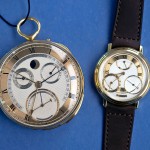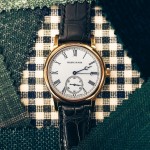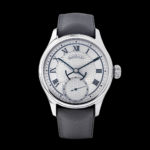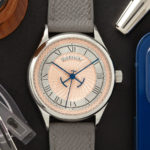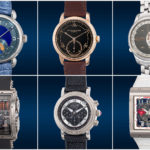Masterpieces of Historical English Watchmaking at Phillips
Sonneries, tourbillons, split-seconds, and more.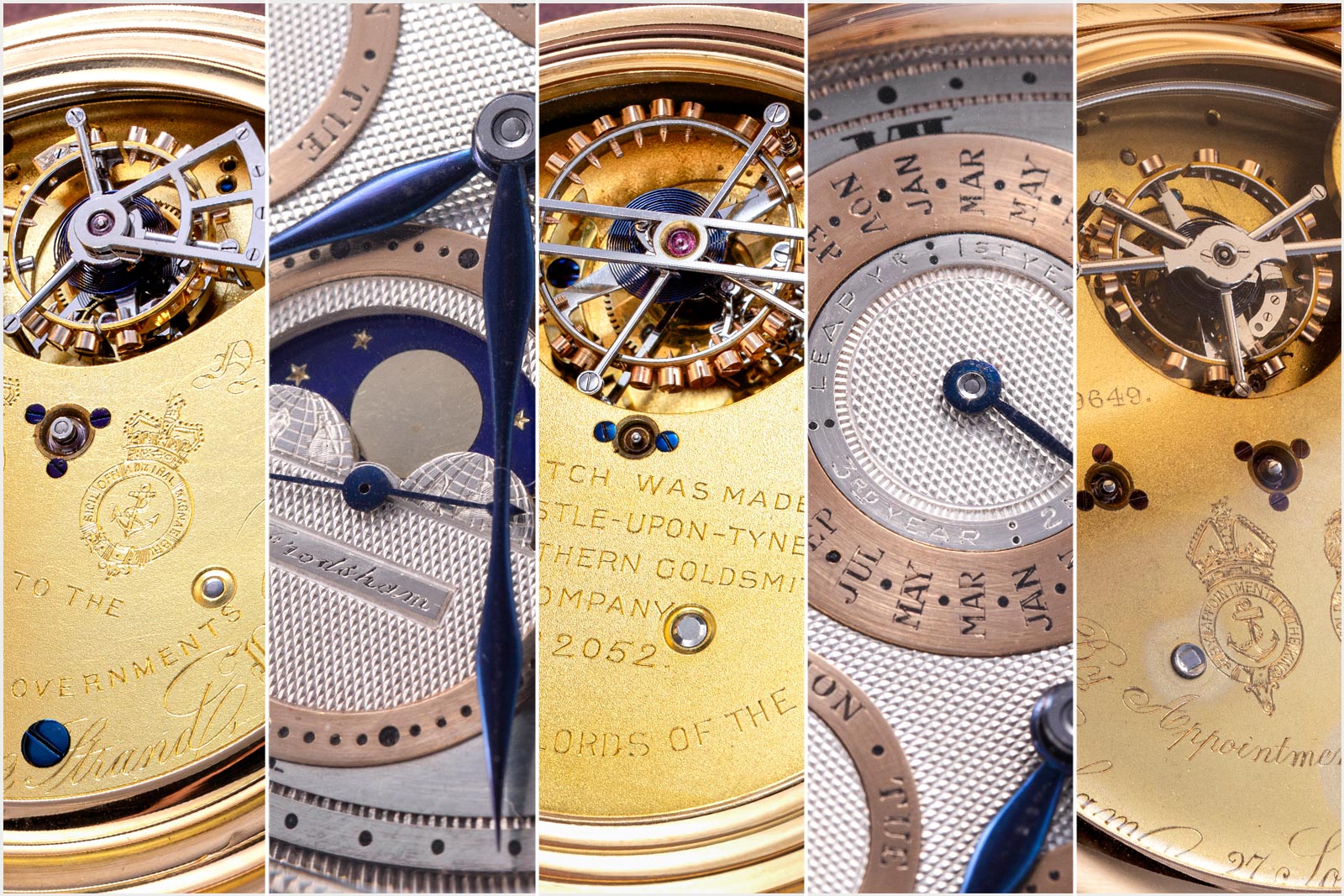
Phillips’ upcoming New York auction, taking place on June 8 and 9, includes an unusual number of exceptional, highly complicated English pocket watches. Notably, these watches were consigned by the same discerning collector who owned the unique Patek Philippe ref. 767 with double split-seconds that recently sold for US$1.30 million including fees.
All dating from the late 19th to early 20th century, the pocket watches exemplify the most prestigious type of timepiece in the world during the period, the high-quality English watch. Banker J. Pierpont Morgan, for instance, was an avid collector of English watches, and owned what was then the most complicated watch in the world, and made in England naturally.
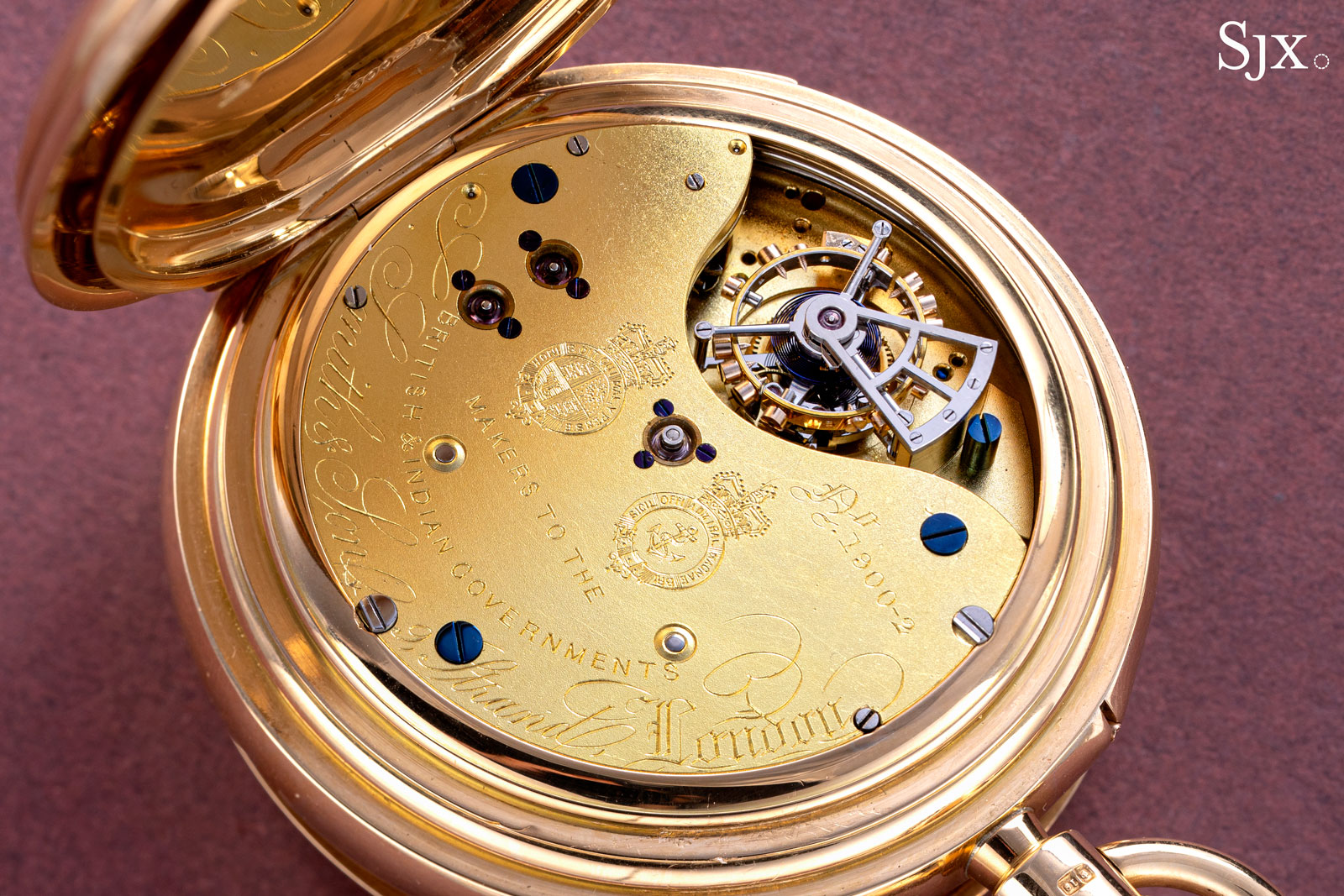
Quintessentially English
That, however, was also when English watchmaking of this quality peaked. A victim of economic crises, war, and unwillingness to adopt new manufacturing technologies, high-end English watchmaking would go extinct after the Great Depression, though it has been revived in the 21st century in artisanal form thanks to the likes of Charles Frodsham.
English watches in their heyday were often very complicated, but restrained in terms of movement decoration. This same philosophy would later be employed by George Daniels, who understood that quality did not equal decoration. He famously said on several occasions that a high-quality watches does not need fanciful decoration (which he implied was customarily Swiss).
The auction includes five English pocket watches from this era, capturing the brands, style, and complications typical of the time. All five will be sold on the second day of the sale, June 9. The catalogue and online bidding are available on Phillips.com.
93 – S. Smith & Son Pocket Grande and Petite Sonnerie with Tourbillon
Three of the five English pocket watches in the sale were made by S. Smith & Son, once a leading name in English watchmaking, akin to Patek Philippe or Vacheron Constantin’s standing in Geneva today. The firm once produced possibly the most complicated English watch at the time (and probably the largest at 77 mm in diameter).
The most complex of the three Smith offerings in the sale is lot 93, a grande and petite sonnerie clockwatch with minute repeater and one-minute tourbillon made in 1899. In style, form, and decoration, this clockwatch is typically English but the like the other watches here, the ebauche was Swiss, reflecting the nature of global watchmaking at the time.
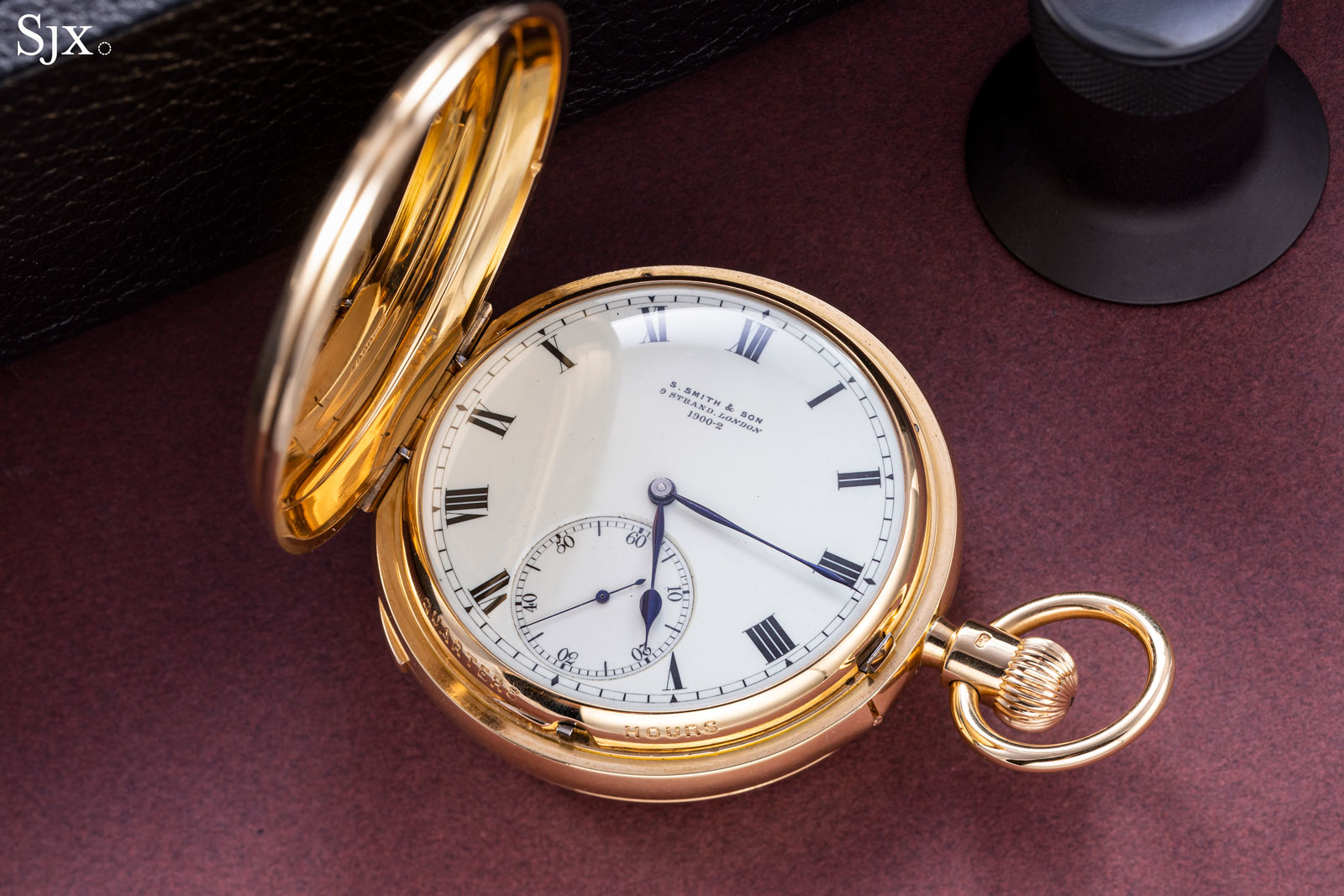
The front of the watch is simple with a white enamel dial bearing the company name and address in London, as was convention at the time.
Under the hinged back is a quintessentially English movement with a three-quarter plate, complete with jewels in gold chatons, which reveals only the tourbillon regulator. Though conceived by the English, this style was later adopted by the Germans, which is why it is now considered “German” watchmaking.
Finished in a simple gilt frosting, the three-quarter plate bears hand-engraved inscriptions noting the company’s achievements, including cyphers reflecting Smith being supplier to the Admiralty.
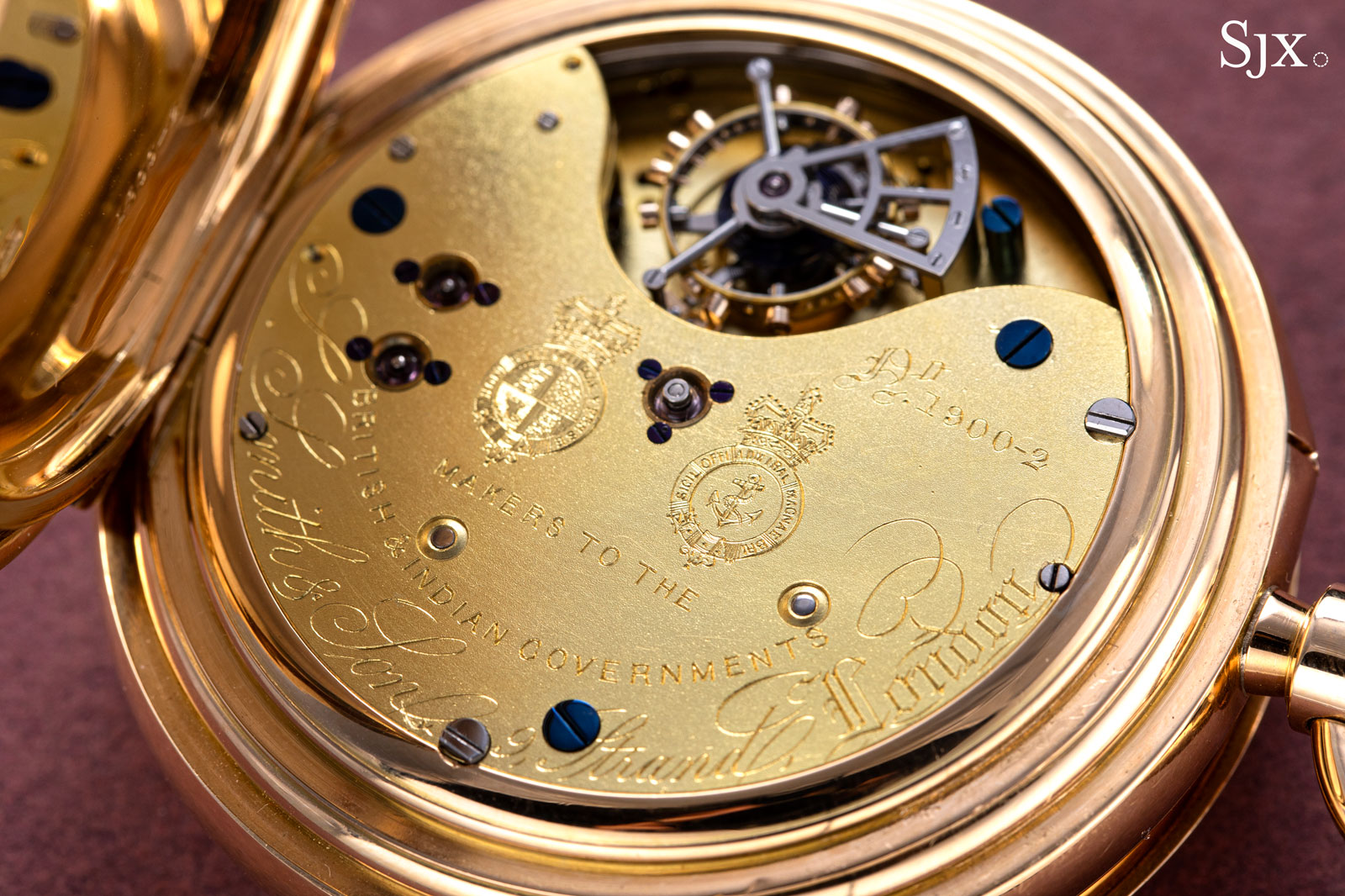
The three-quarter plate hides almost all of the moving parts of the movement, but the key elements of a clockwatch are visible, including the pivots for the twin barrels
As was the case with many top-of-the-line English watches of the time, this movement was produced by Nicole, Nielsen & Co. Originally founded by a pair of Swiss immigrants to London in 1839, the firm started out as Nicole & Capt before being renamed in 1876 by the Danish partner who took over that year after the death of Nicole. The firm then went out of business in 1933 during the Great Depression.
For highly complex calibres like this one, the firm often relied on Swiss suppliers for ebauches that it then completed and finished. Under the three-quarter plate is almost certainly a Swiss clockwatch movement made in the Vallee de Joux.
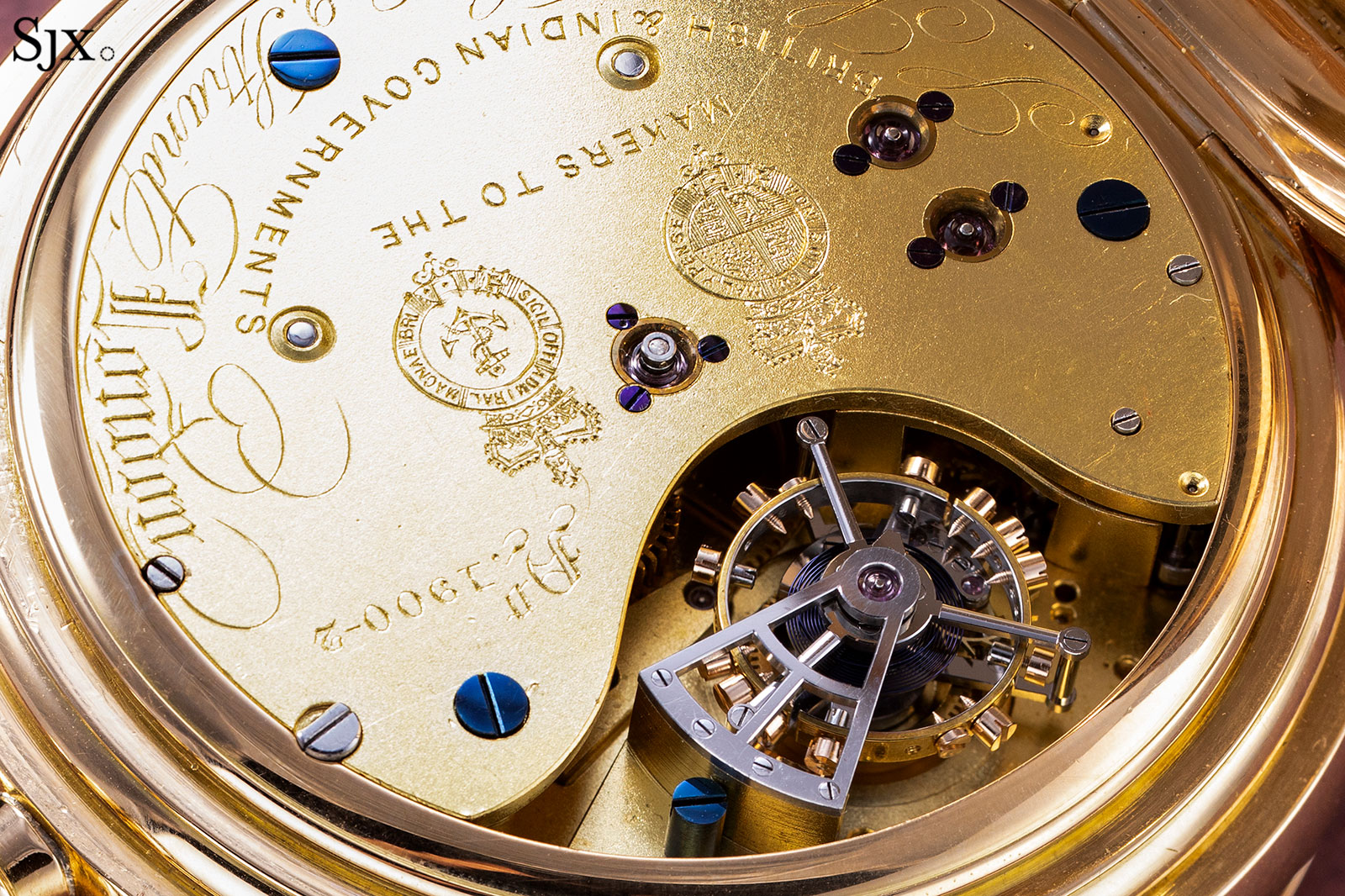
A cutaway in the plate shows off the one-minute tourbillon that has a Nicole Nielsen type 1 cage with three arms containing a split, bimetallic balance. Despite lacking the elaborate decoration that Swiss watchmakers would later perfect, the quality of make is easily visible in the tourbillon assembly.
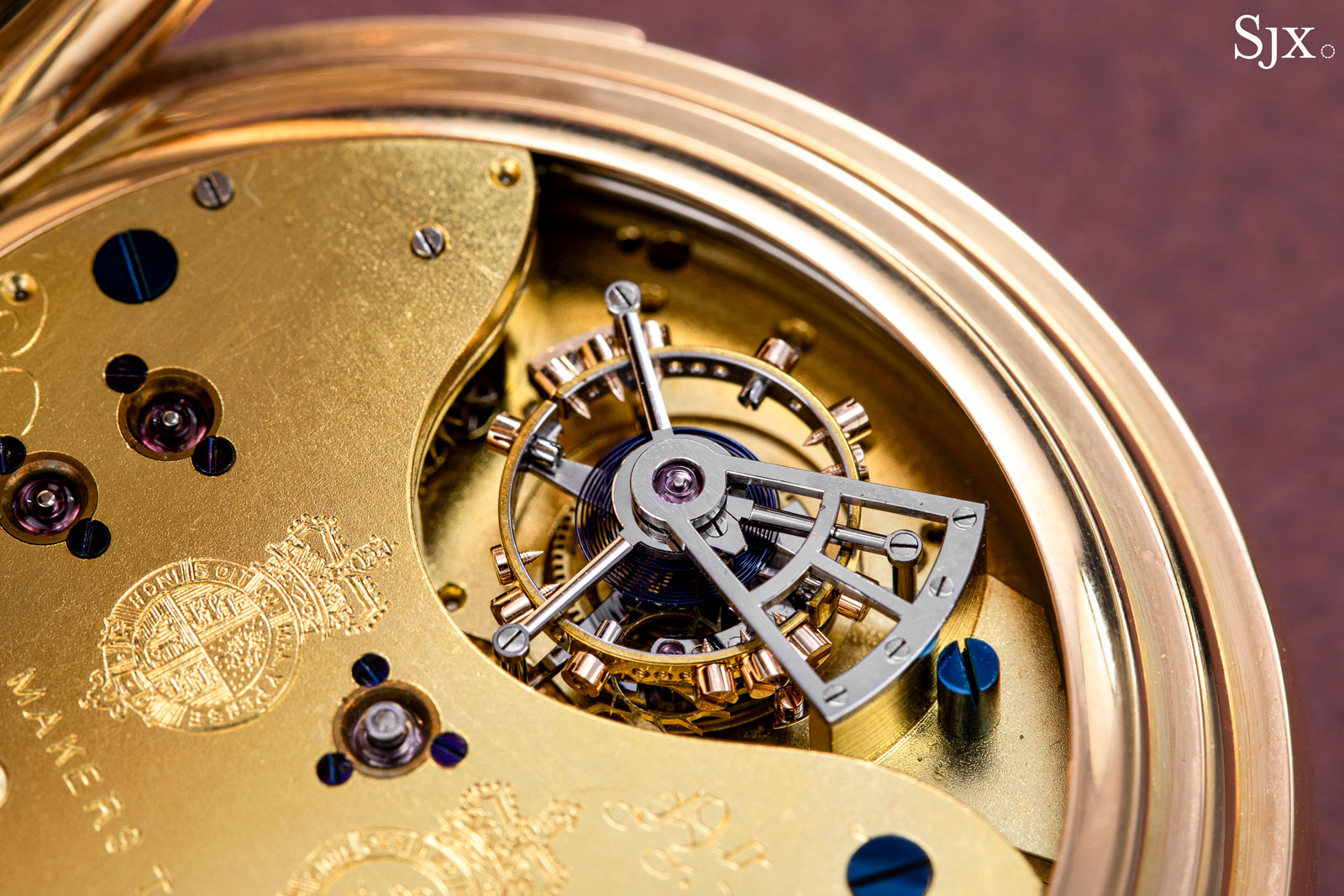
This watch is a chronometer in the true sense of the term, not merely because it features a tourbillon. It was tested at the Kew Observatory in 1901 and obtained a Class A “Especially Good” certificate with 81.4 points, meaning it ranked amongst the best timekeepers of the period.
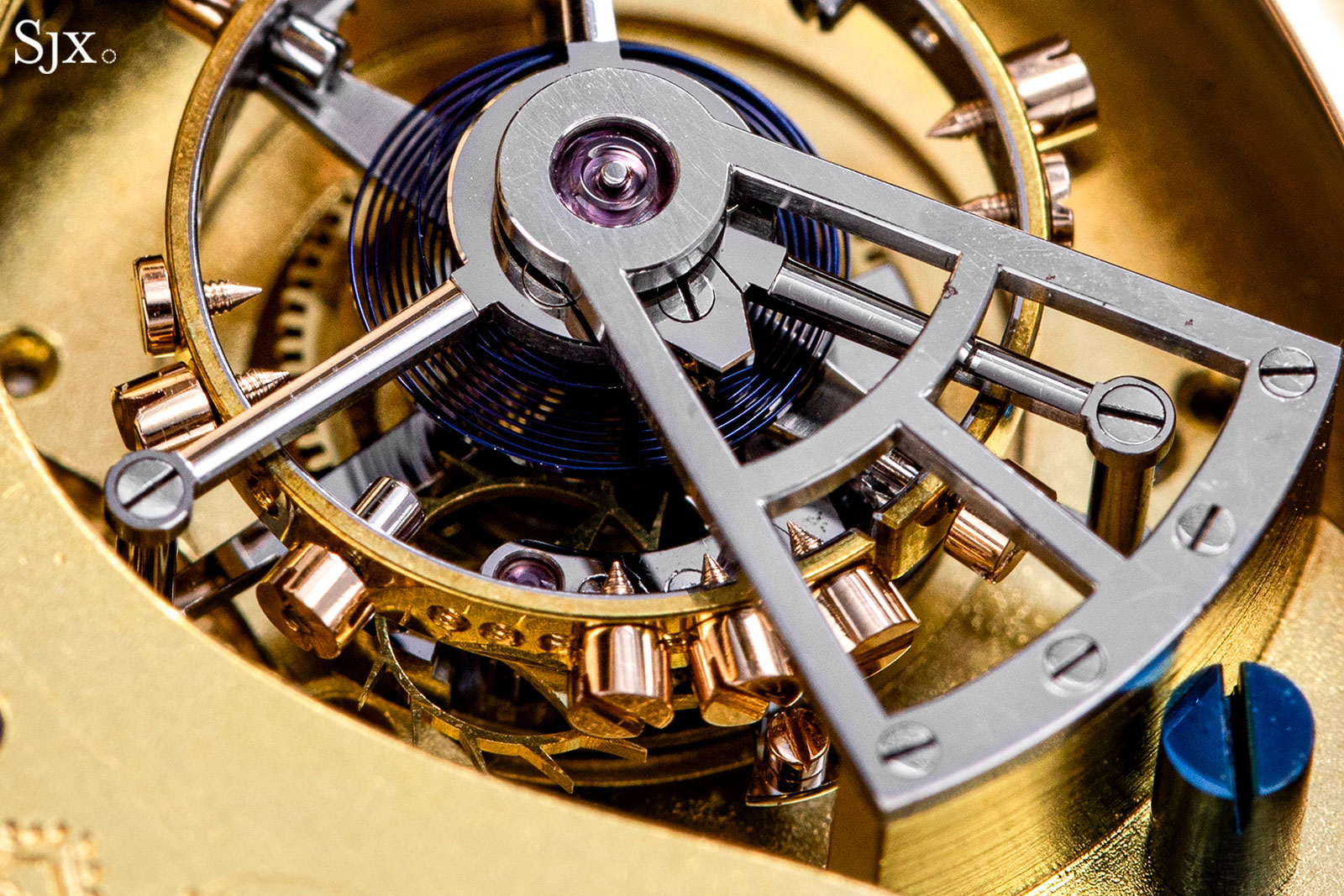
The Smith grande sonnerie-tourbillon has an estimate of just US$80,000-160,000.
The last time this watch appeared at auction was at Antiquorum in 1990, and the low estimate then was CHF250,000, reflecting the subsequent shift towards wristwatches as the primary segment in watch collecting.
More S. Smith & Son
Another example of S. Smith & Sons’ work is lot 90, a grand complication that was coincidentally made the same year as the clockwatch above. A grand complication in the traditional sense, this combines a minute repeater, split-seconds chronograph, and perpetual calendar.
Likely one of four made according to Phillips, this was tested at the Kew Observatory in 1899 where it obtained a Class A certificate.
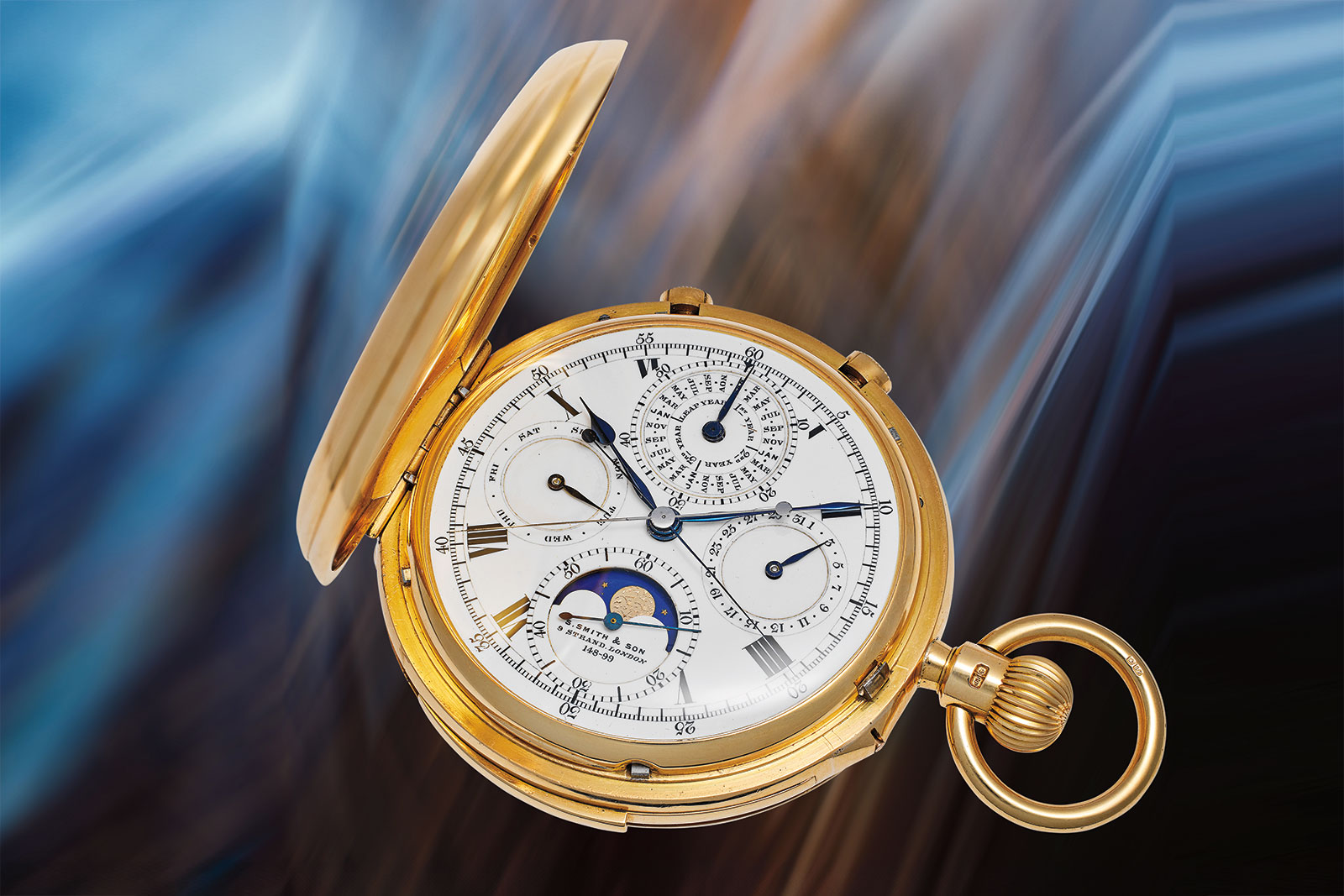
Image – Phillips
The movement is once again the work of Nicole Nielsen, and also likely to be based on a Swiss ebauche but completed in a distinctly English style with a three-quarter plate visible below the chronograph works.
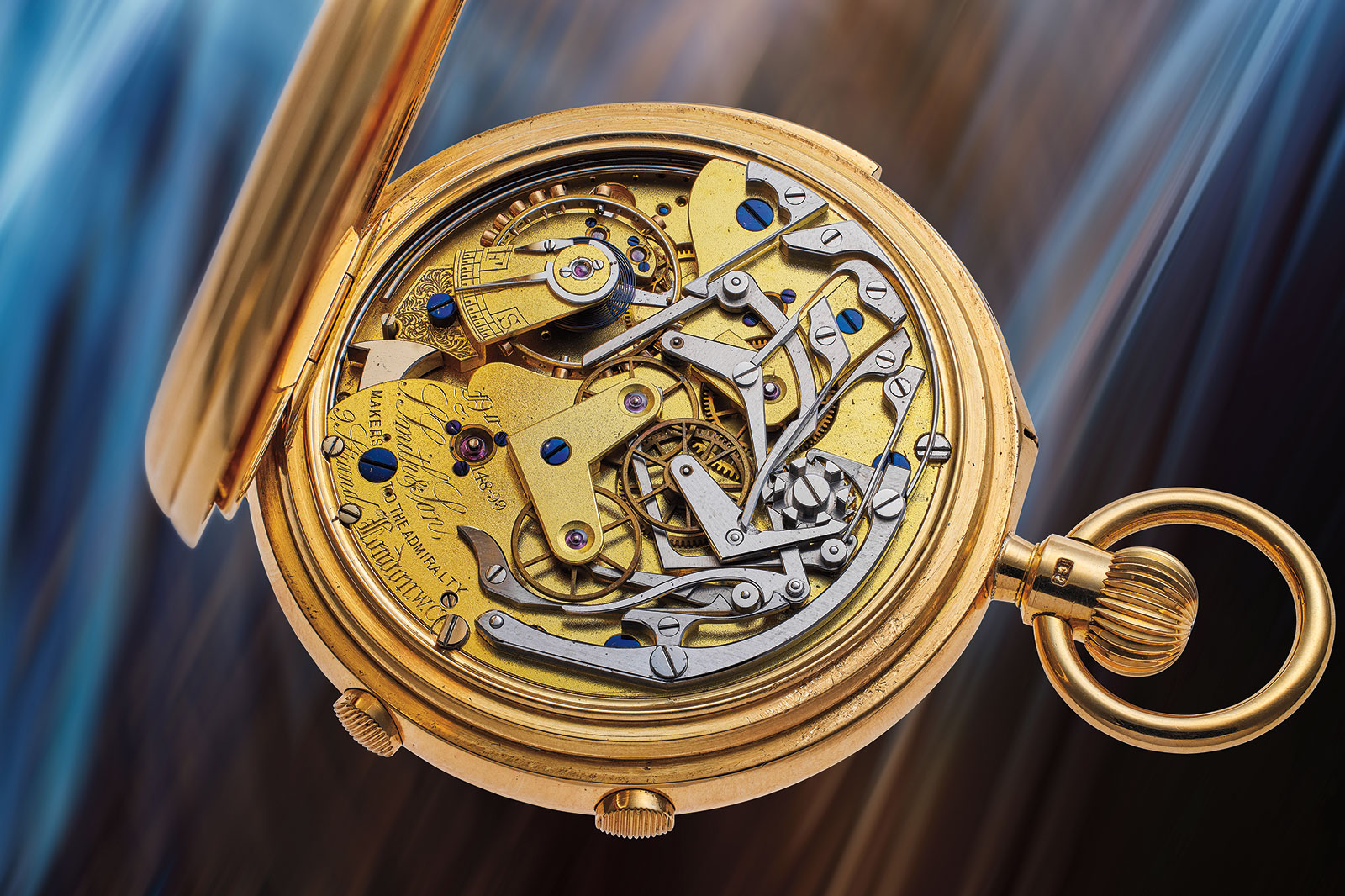
Image – Phillips
The Smith grand complication is estimated at US$40,000-80,000, compared to a low estimate of CHF120,000 when it last appeared at auction in 1990.
It is followed by lot 91, an S. Smith & Son split-seconds chronograph with tourbillon. It has a clean, symmetrical layout that was essentially standard for this particular type of English watch.
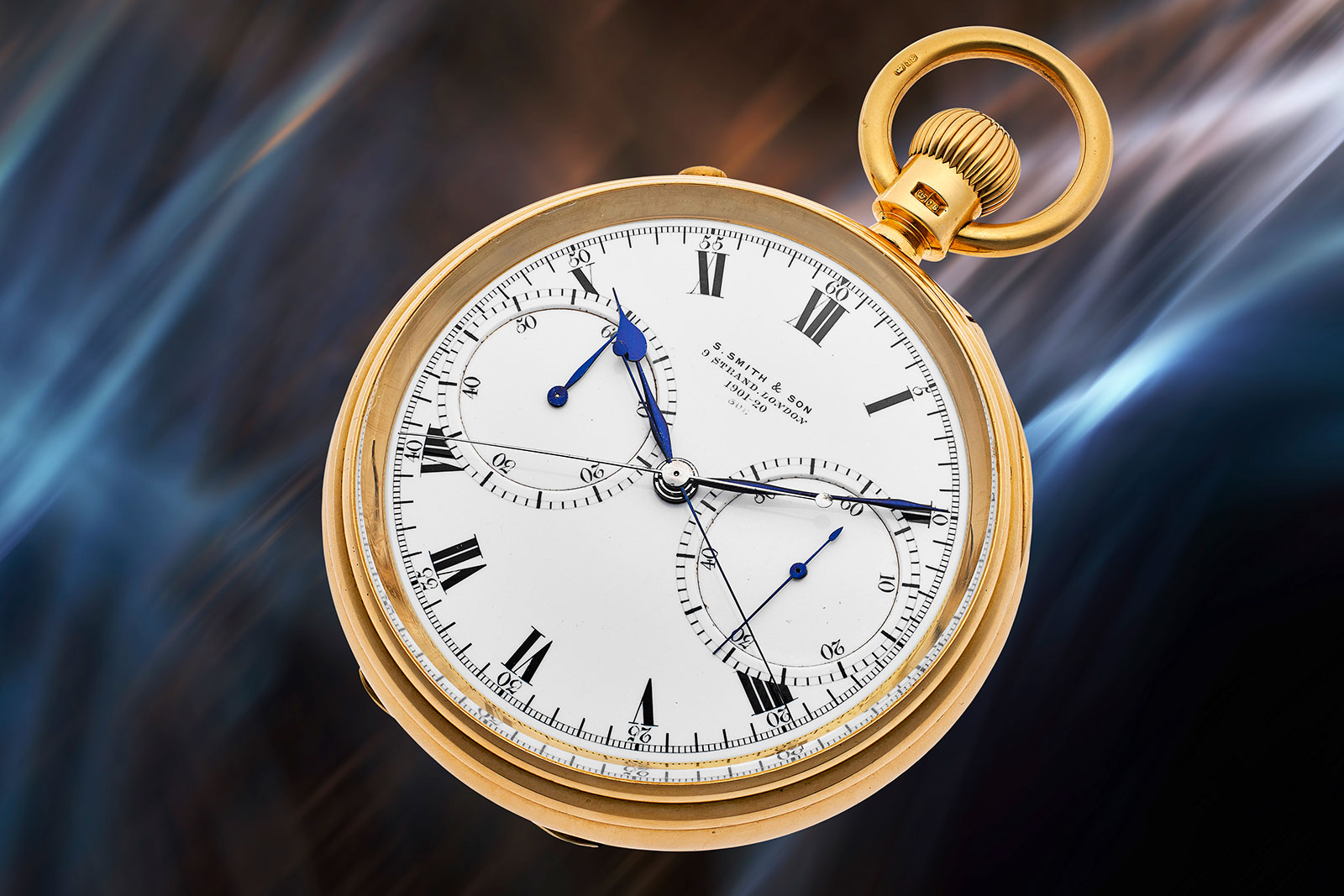
Image – Phillips
The keen eyed might notice a similarity, both on the front and back, with equivalent watches made by Charles Frodsham. That’s for good reason – both Frodsham and Smith relied on Nicole Nielsen for the movement, which in turn was built it on a Swiss-made ebauche. This calibre was one of Nicole Nielsen’s signature movements and incorporated unique mechanisms invented by Nielsen, including the chronograph going train.
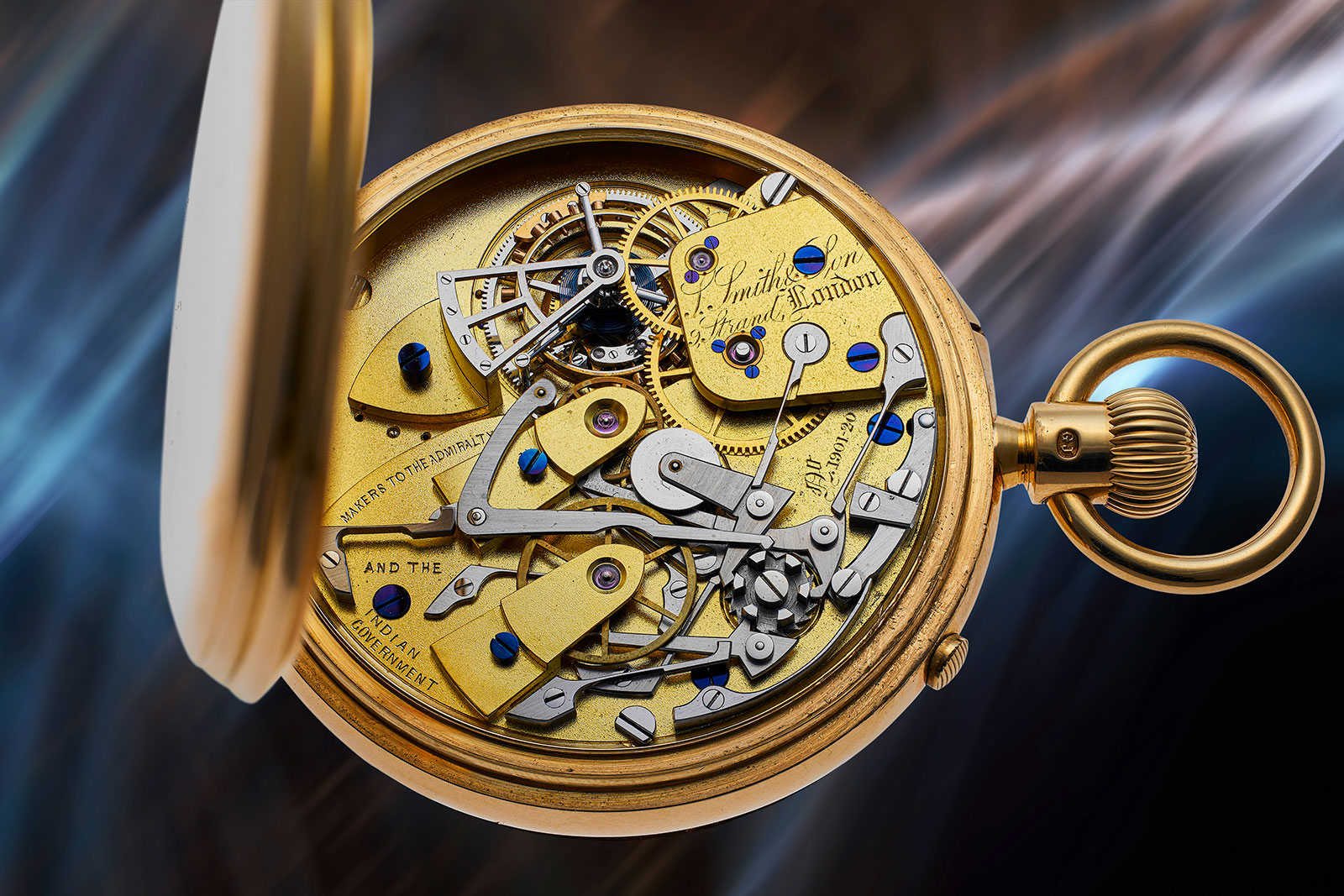
Image – Phillips
Being a highly priced, complex timepiece with a tourbillon, this was tested at the Kew Observatory, on no less than six occasions from 1901 and 1905, and achieved the highest possible result of a Class A “Especially Good” certificate in 1902.
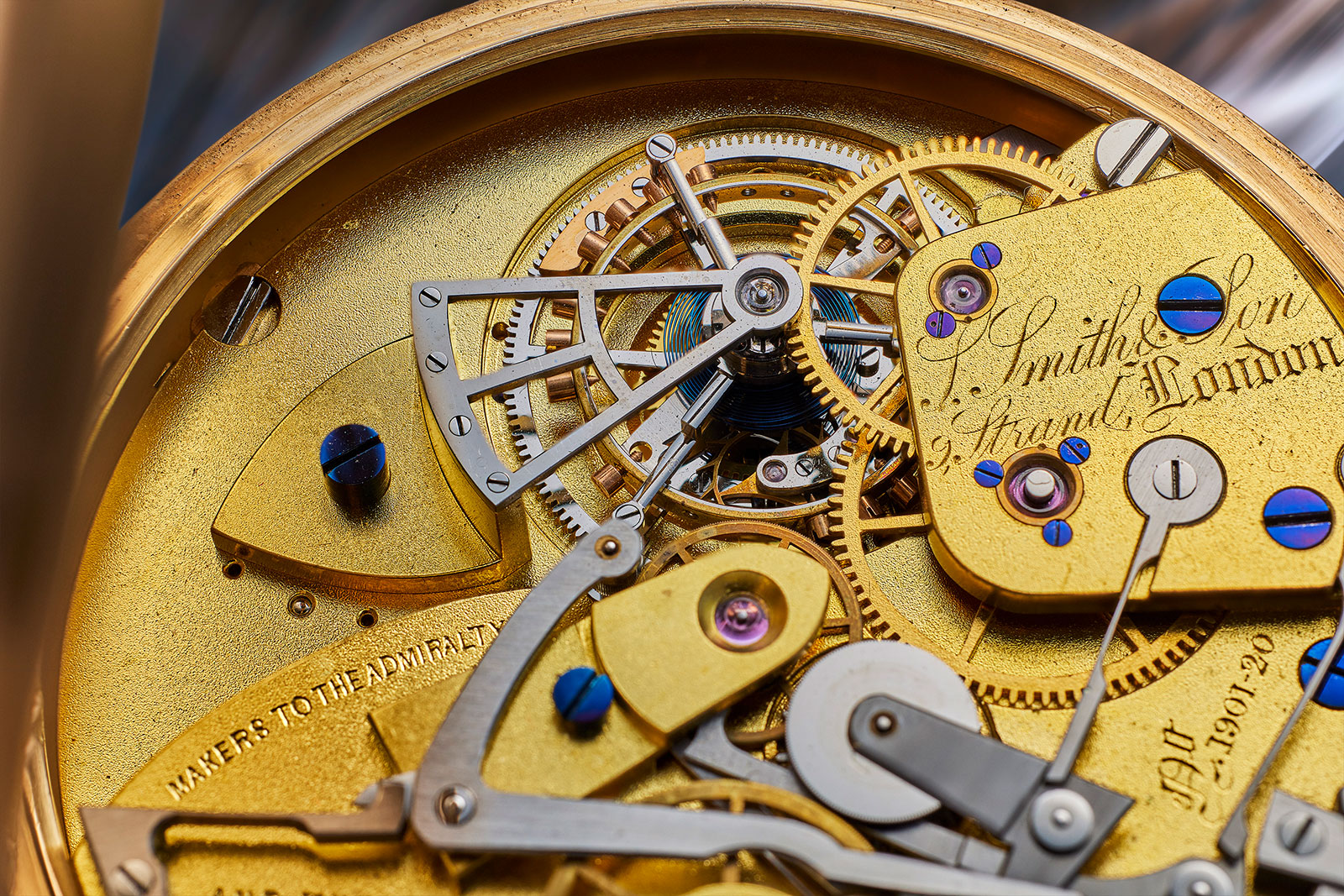
The type 2 Nicole Nielsen tourbillon cage. Image – Phillips
Phillips sold a nearly identical Frodsham from the same collection at its recent Hong Kong auction for about US$179,000 including fees. This, on the other hand, has an estimate of US$50,000-100,000.
95 – Charles Frodsham Grande Sonnerie with Tourbillon and Perpetual Calendar
The piece de resistance of the English watchmaking in the sale is the Charles Frodsham clockwatch dating from 1917. Boasting a grande sonnerie with minute repeater, tourbillon, and perpetual calendar, it is contained in a monumental yellow gold case measuring 75 mm in diameter and weighing almost half a kilogram. This is a lot of watch, both literally and conceptually.
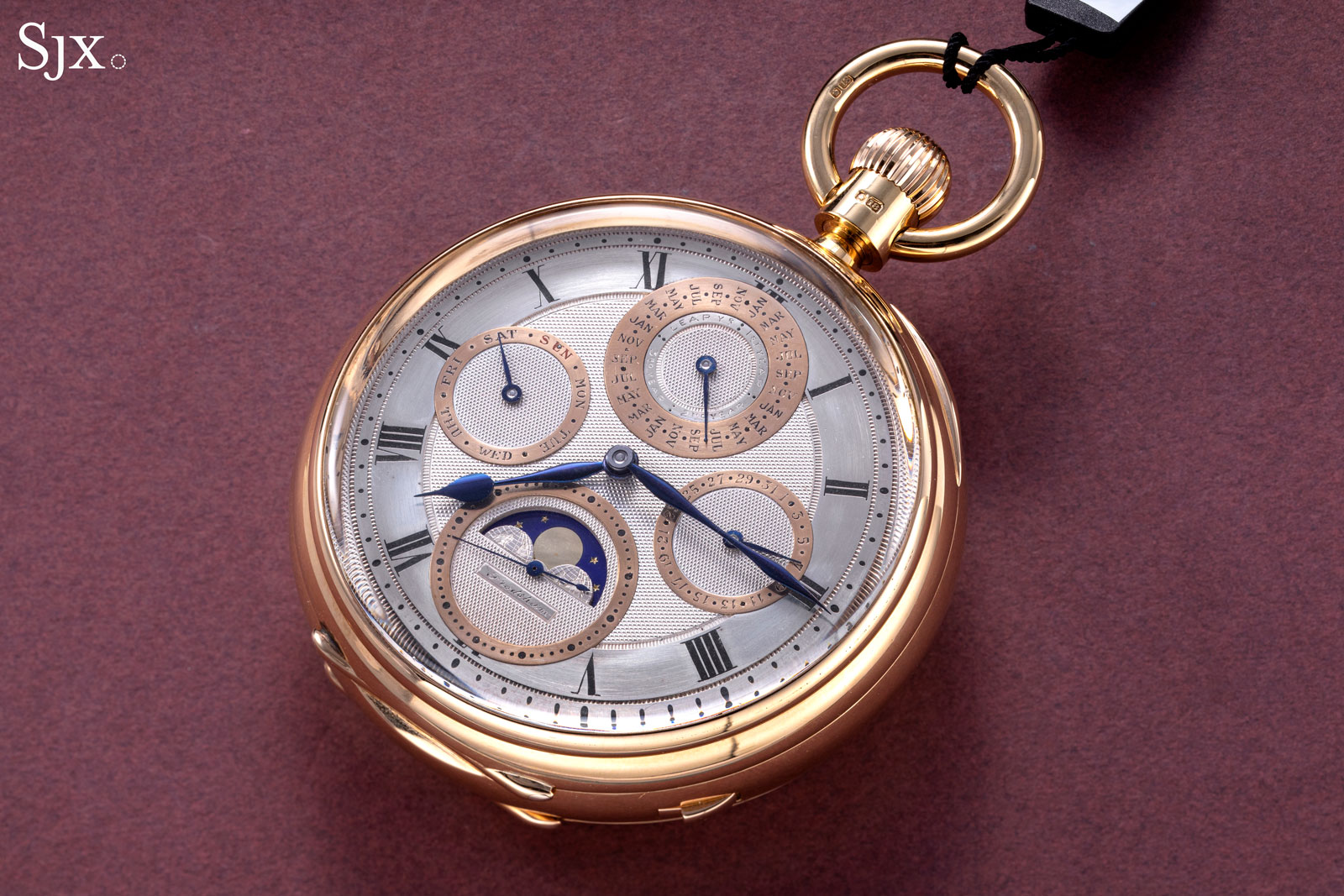
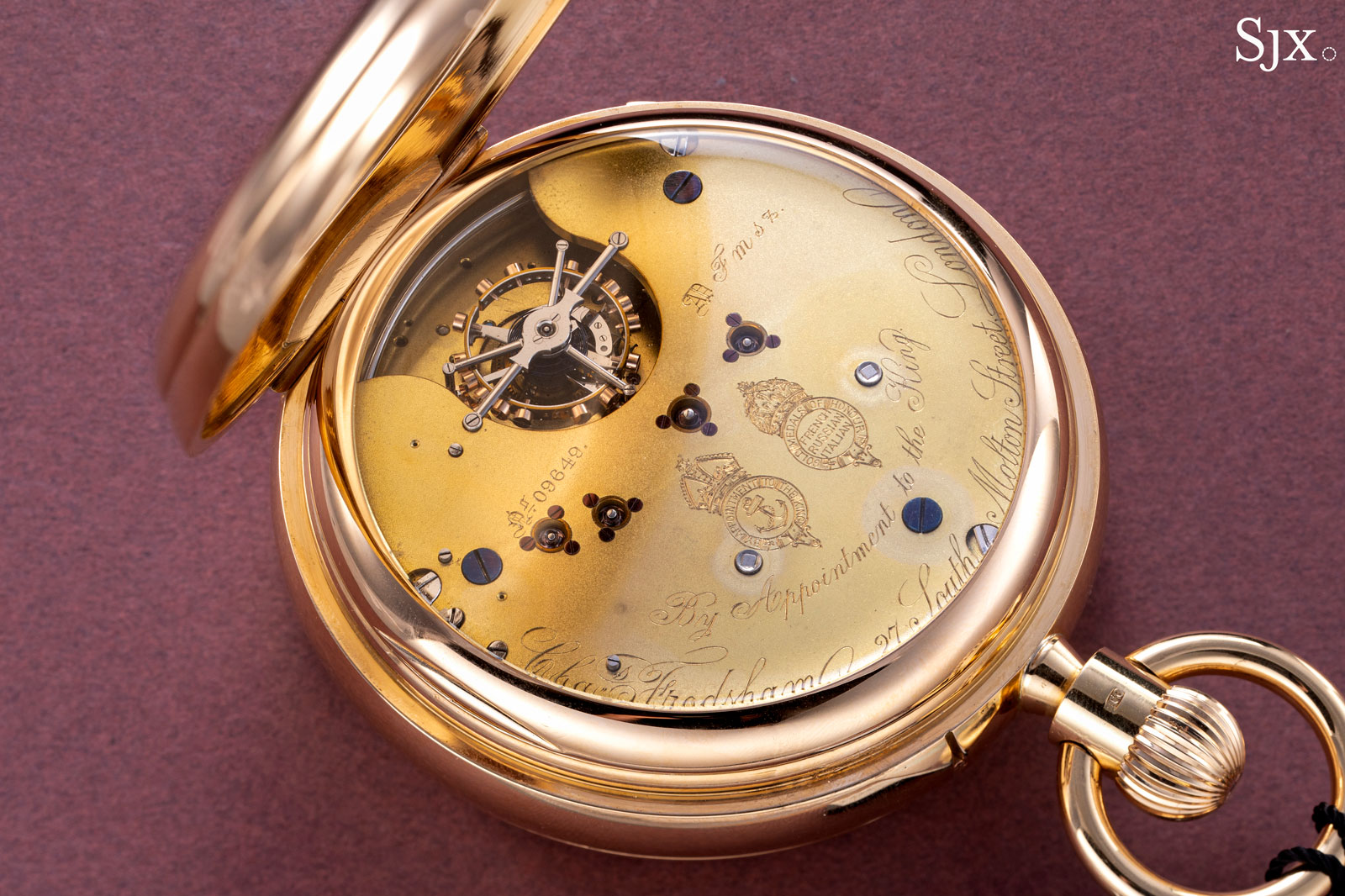
Unusually, it is fitted with a two-tone guilloche dial made up of a silvered dial with the sub-dial scales in gold.
Even though the elements of the dial are refined, the dial possesses a degree of massiveness. The hands, for instance, are finely shaped but impressively three-dimensional.
Interestingly, the engine turning is fine but workmanlike, making it is reminiscent of George Daniels’ work, which on reflection should not be surprising.
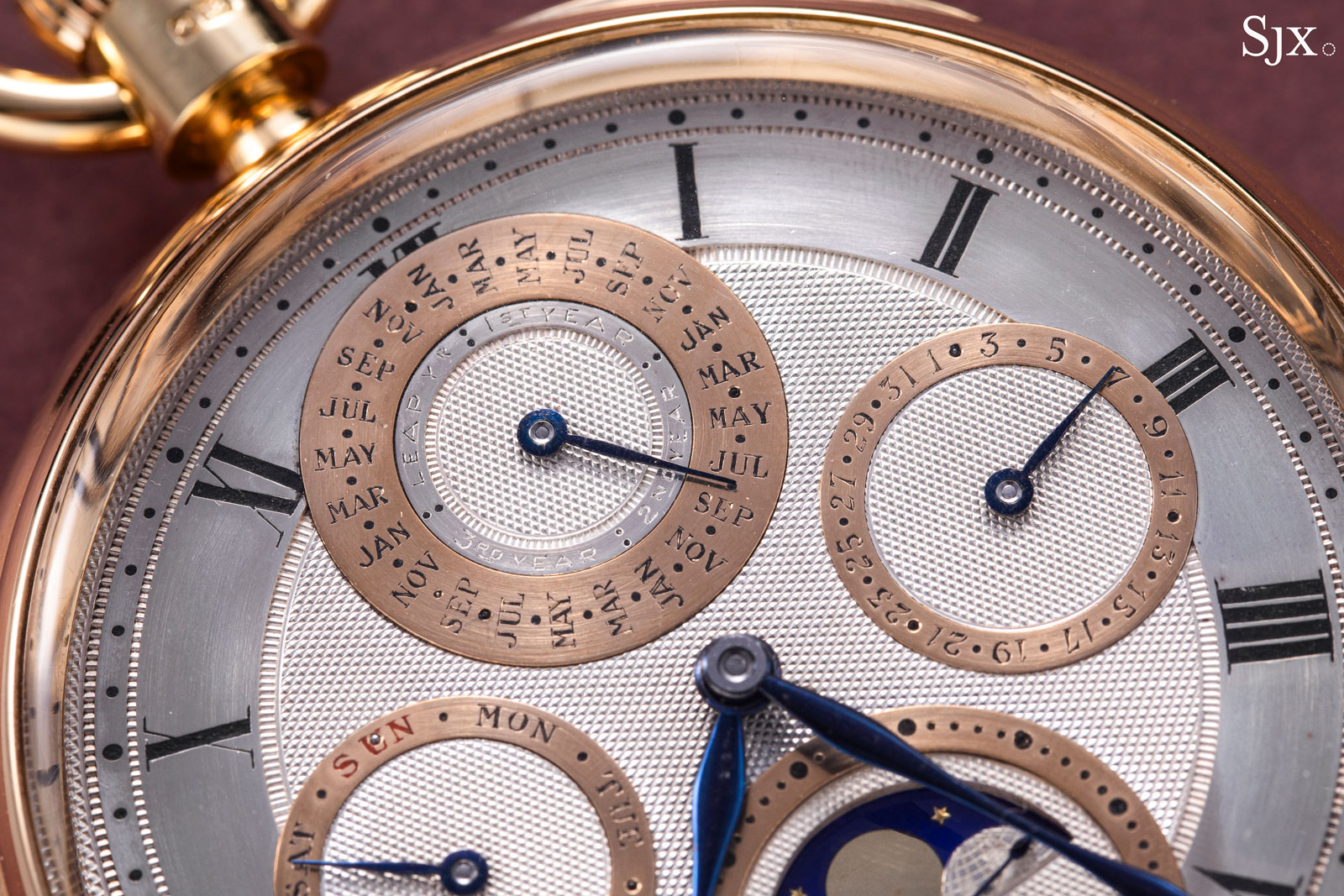
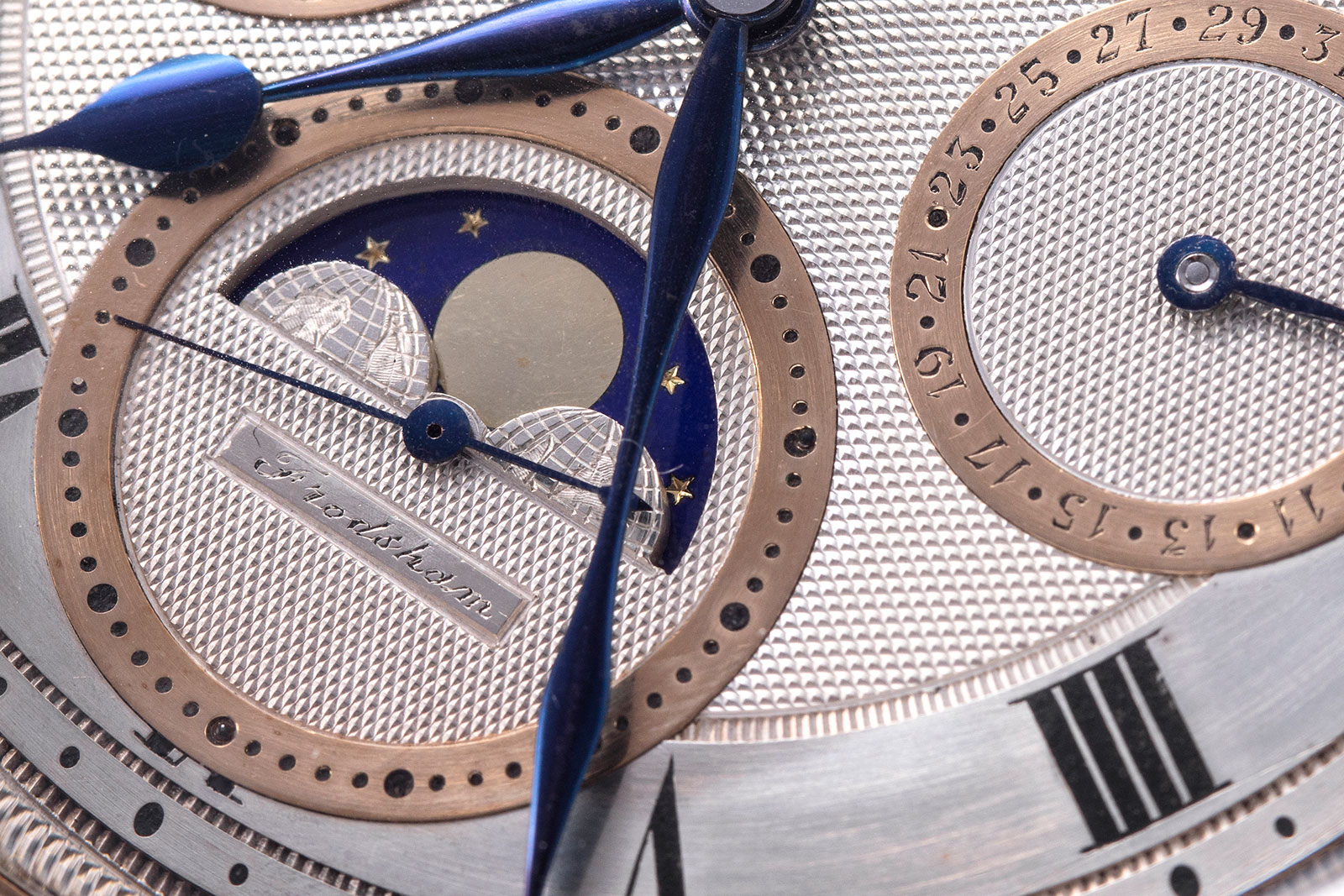
The visual impact of the English style of movements is most apparent here, as the three-quarter plate is enormous.
Far larger than the usual three-quarter plate, it is still done in the conventional English style – gilt frosting, chatons in screws, and engraving that proudly declares Frodsham’s standing as one of the preeminent watchmakers of the time. Under the three-quarter plate would be the two barrels that drive the two-train movement. Though hidden, the pivot of each barrel is visible next to the twin cyphers.
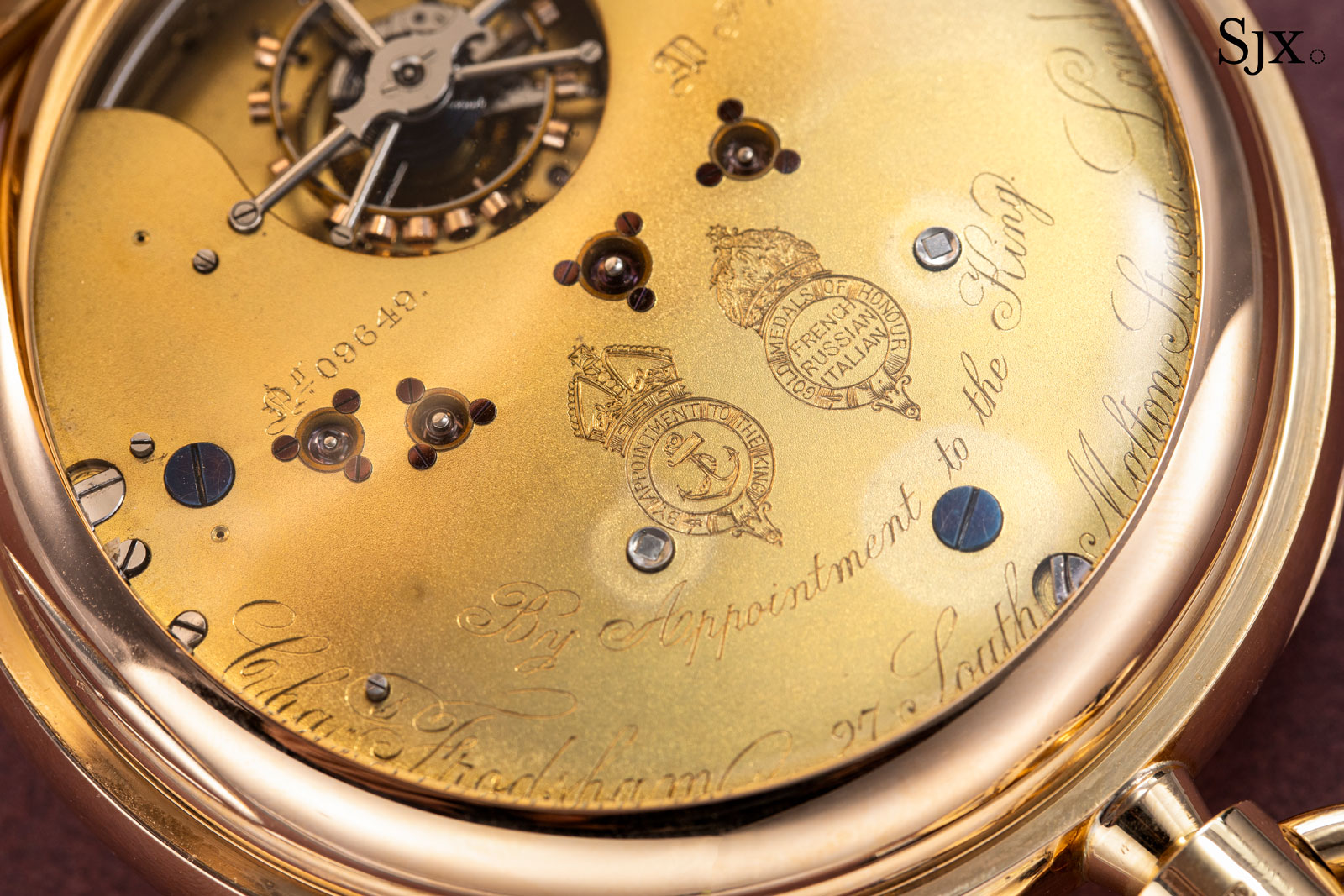
The twin cyphers note Frodsham’s status as watchmaker to the king as well as the gold medals won at European exhibitions
Naturally the movement was supplied by Nicole, Nielsen & Co., and most likely built on a Swiss ebauche. The tourbillon is a Nicole Nielsen type 1, similar to that found in the S. Smith & Son grande sonnerie featured above.
The tourbillon bridge, however, is a bit more decorative than usual with its central boss featuring flared ends and incredibly fine steps along its outline.
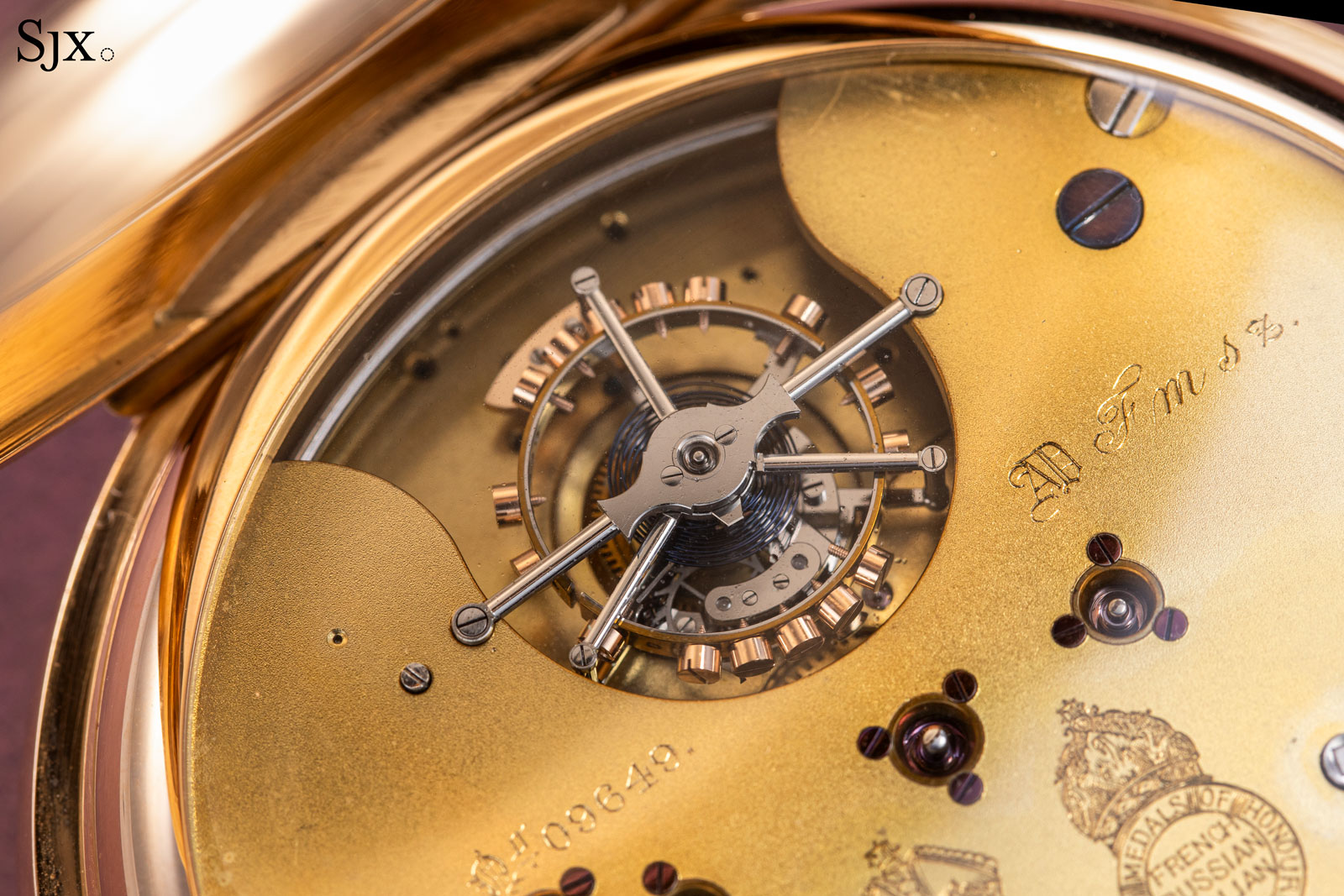
With the watch now over 100 years old and the case not being water resistant, the movement reveals age in dust. When this emerged fresh from the Frodsham work in 1917, with all of its black-polished steel parts perfectly reflective, it must have been spectacular.
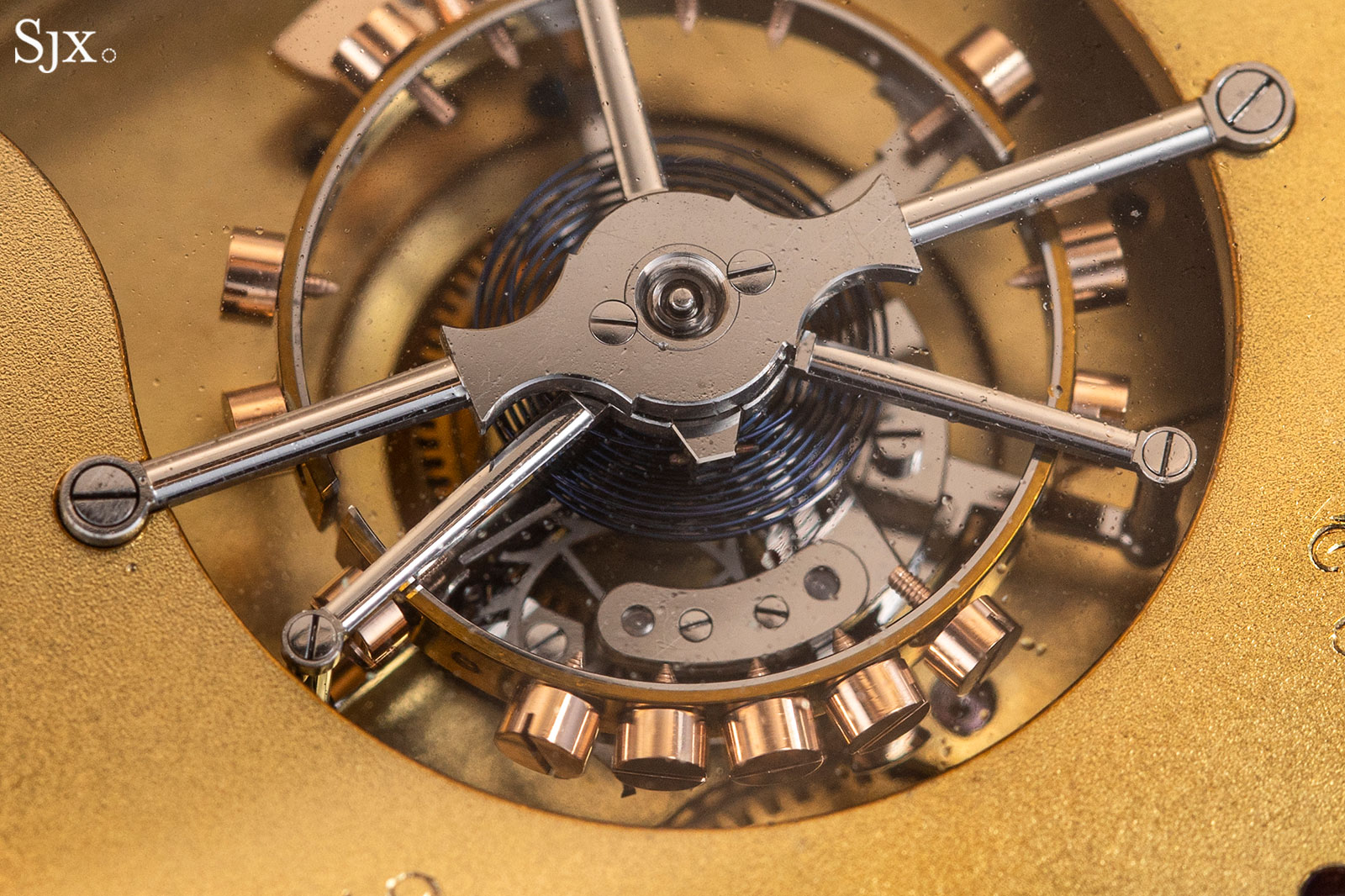
According to Phillips, this watch was first sold at Sotheby’s in 1989 by the son-in-law of the original owner, Alexander Smith, an American banker who was then a Major in the army and general manager of the American Red Cross in France during the First World War. It is thought that Smith bought this watch when he served in Europe.
It was acquired by the current owner in that 1989 sale, and has remained practically unused since then. Presented with its original brass-cornered mahogany box, this has an estimate is US$$200,000 – 400,000.
97 – Northern Goldsmiths Company One-Minute Tourbillon
This is the English equivalent of a Swiss-made tourbillon pocket watch badged “Tiffany & Co.” and is amongst the last examples of fine English watchmaking.
Now a retailer rather than a watch brand, the Northern Goldsmiths Company was established in 1778. Today it trades simply as Goldsmiths, having long been a subsidiary of British retail giant Watches of Switzerland. Amongst other brands, Goldsmiths carries Rolex, which it has been doing so for over 100 years.
But before the company even became a Rolex retailer, Northern Goldsmiths made a small number of tourbillon pocket watches between 1917 and 1922 – 15 or so in total with nine known today – in its own workshop, which also produced watches for the Royal Navy.
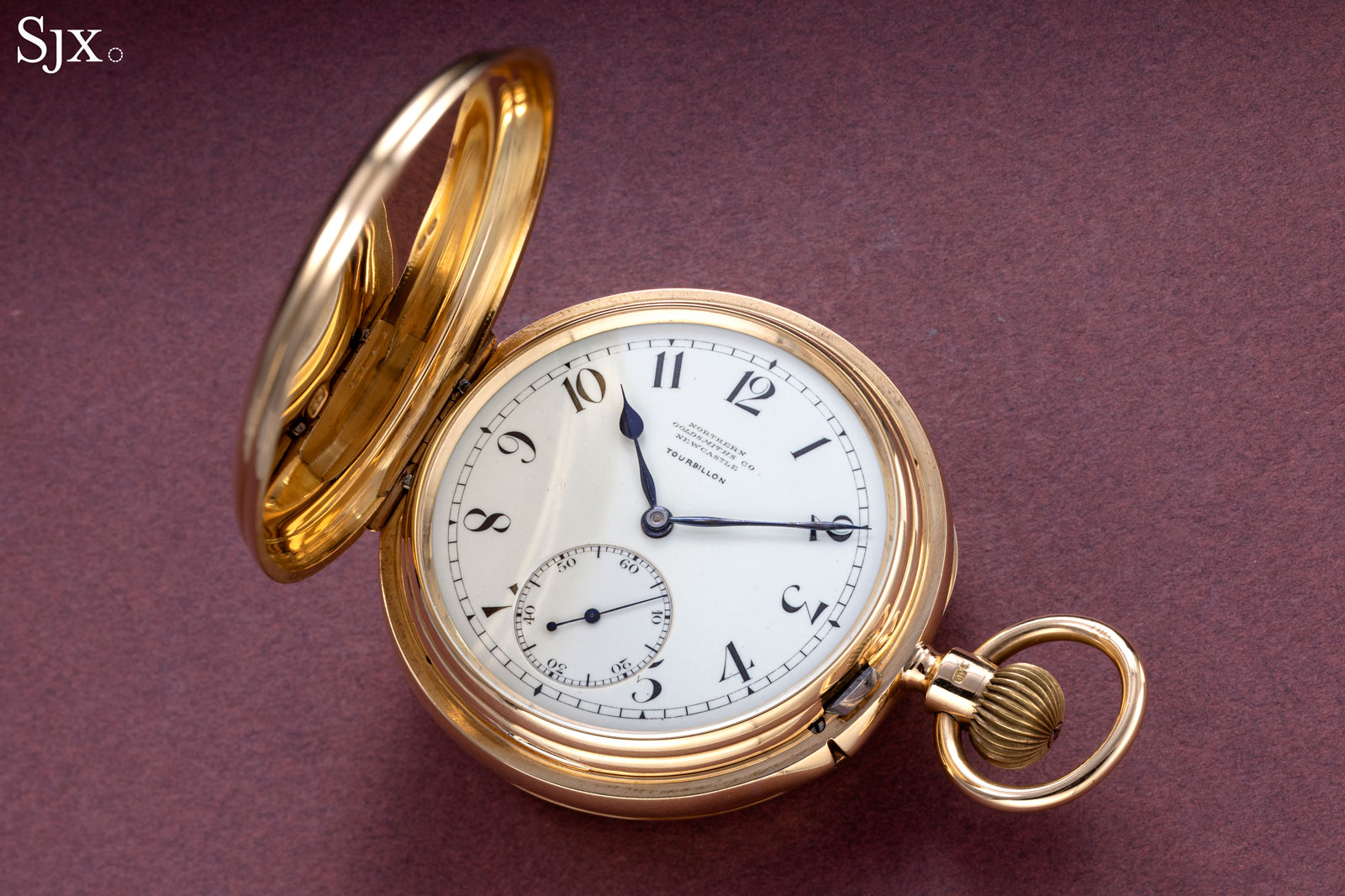
The workshop was supervised by a Swiss watchmaker, Leon Forestier, who recruited an English watchmaker named Smith to produce the tourbillon carriages.
Interestingly, the last few examples made were regulated by Sidney Better, a London-based watchmaker known for his tourbillon and karrusel watches. (The history of these tourbillons is well documented by Paul Wyatt in a 2011 issue of Antiquarian Horology.)
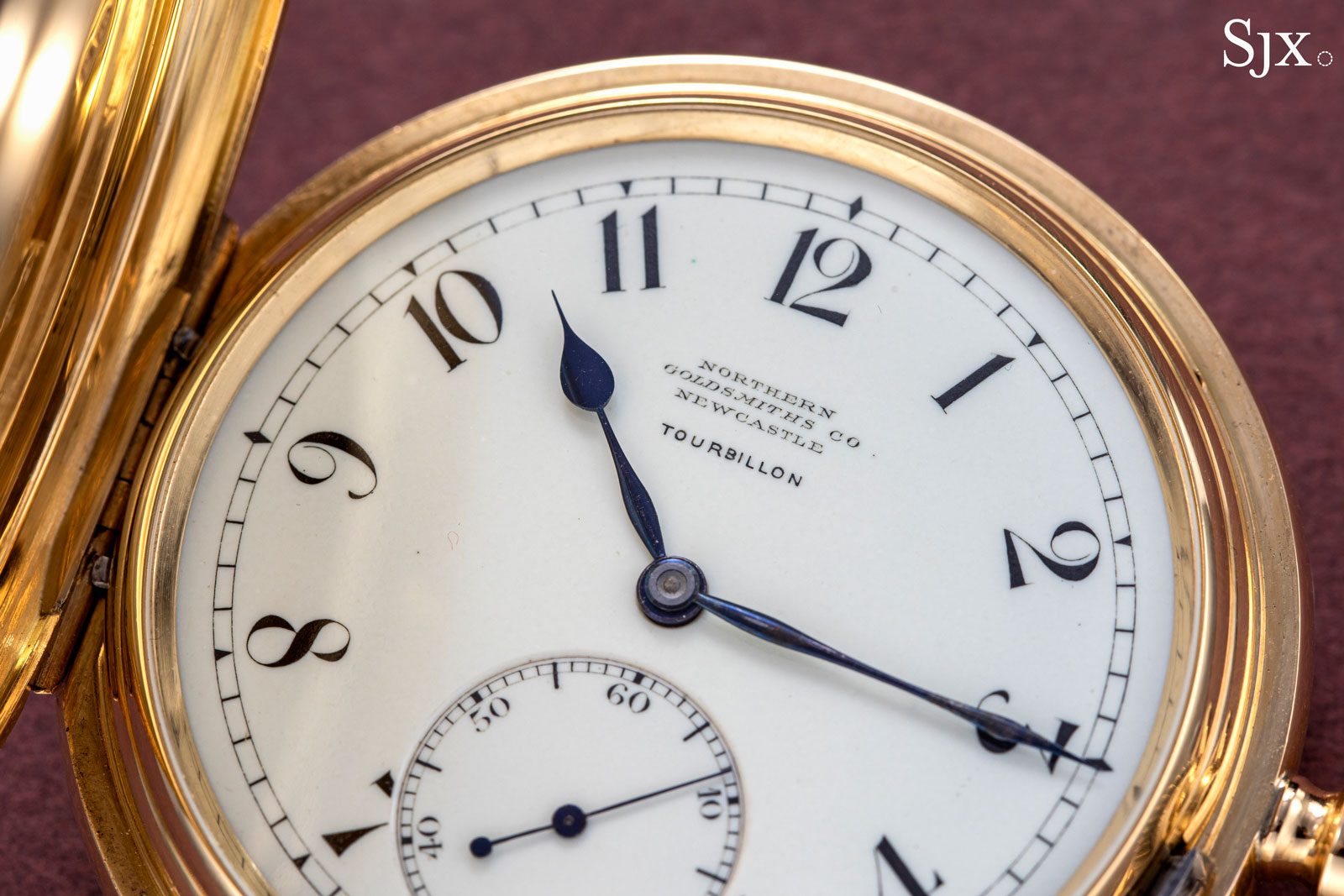
The movement inside is quintessentially English, and even more so than the other watches here as it is likely the ebauche was English as well.
Almost perfectly symmetrically, the three-quarter plate has a wavy cutout that frames the tourbillon regulator. As is convention for such watches, the three-quarter plate is engraved with several lines of text, including the all important fact that Northern Goldsmiths supplied the Admiralty.
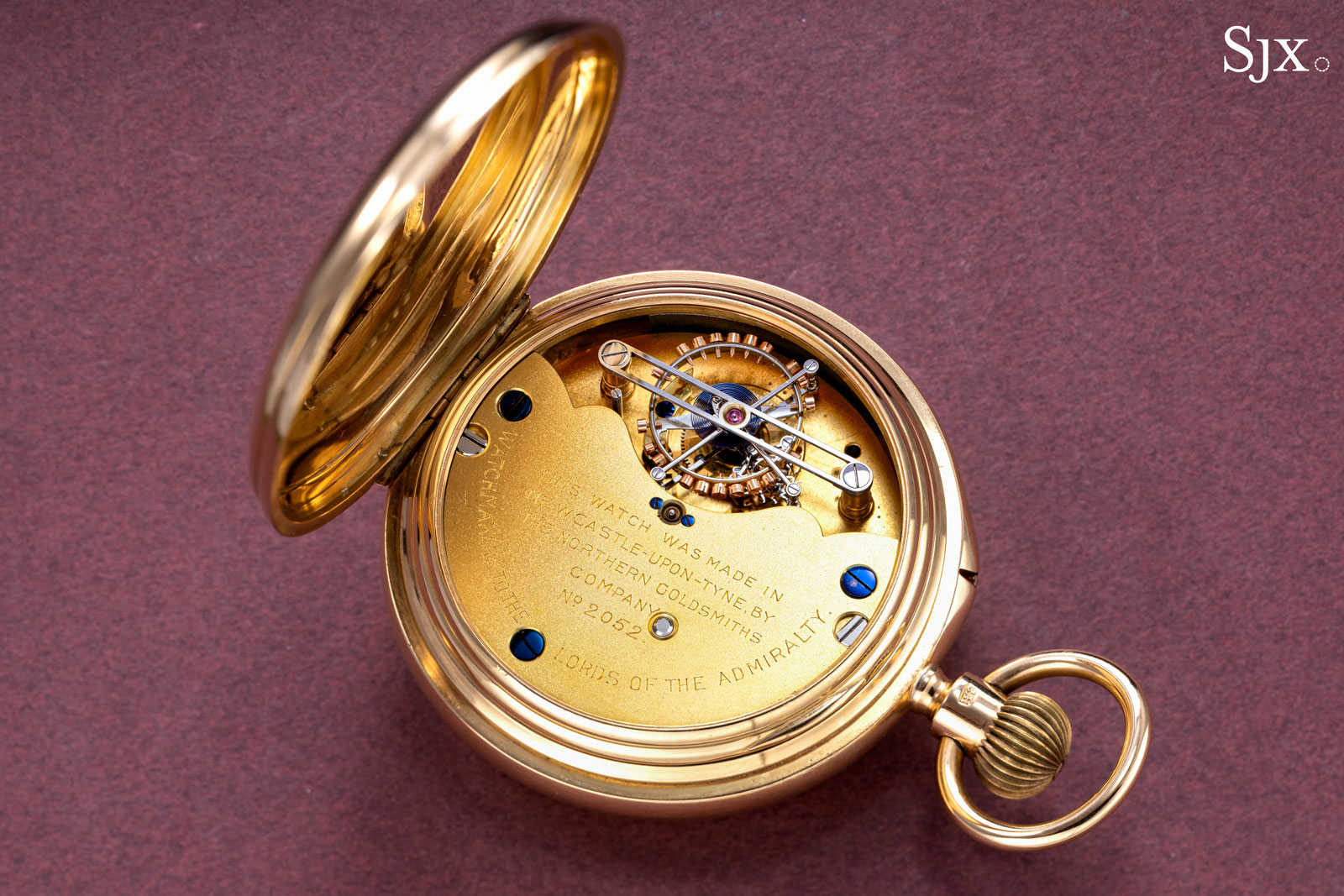
In many ways the tourbillon typifies the English style of watchmaking. There are no superfluous elements in the tourbillon assembly, but everything is refined and precisely executed, reflecting Daniels’ philosophy on quality and decoration.
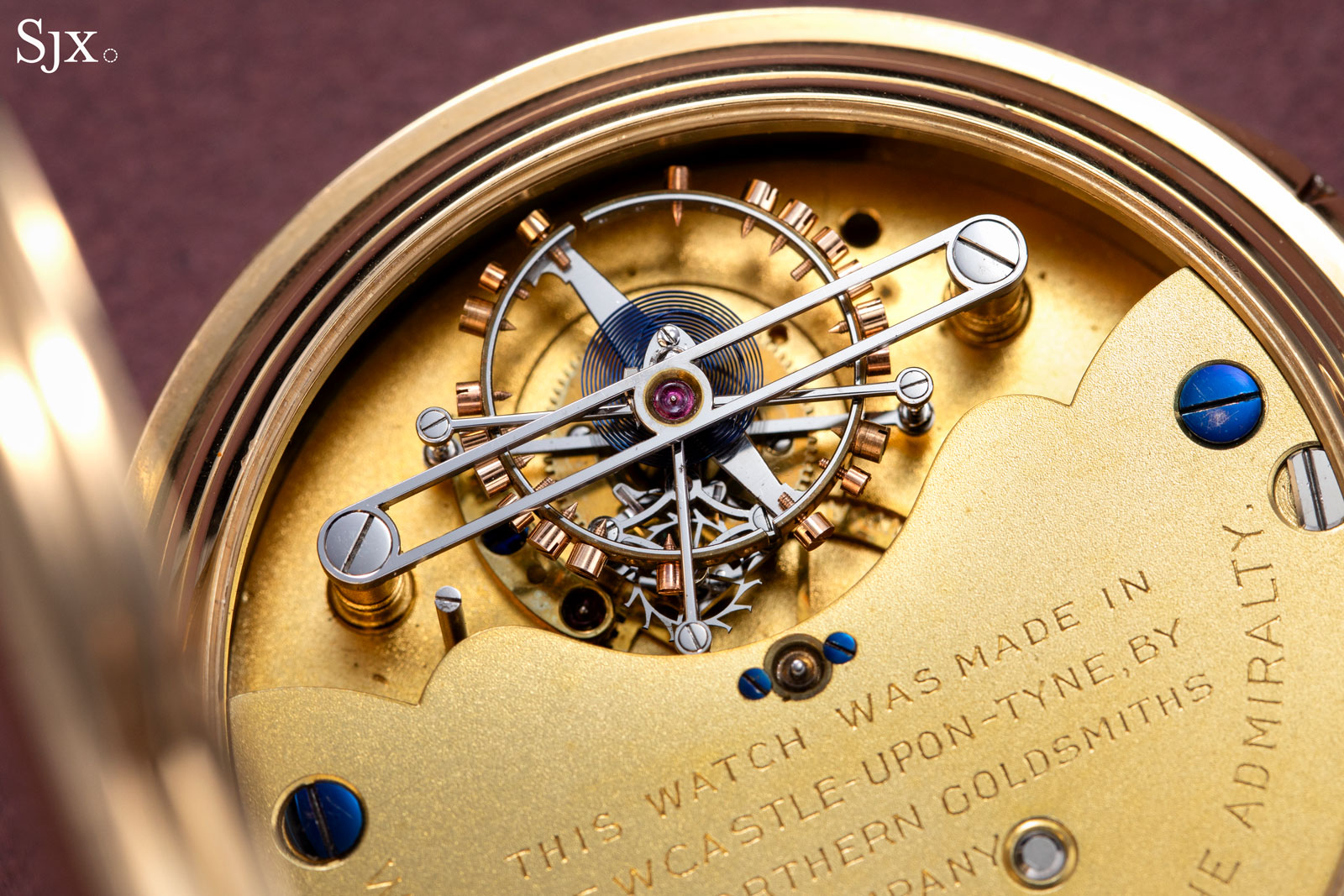
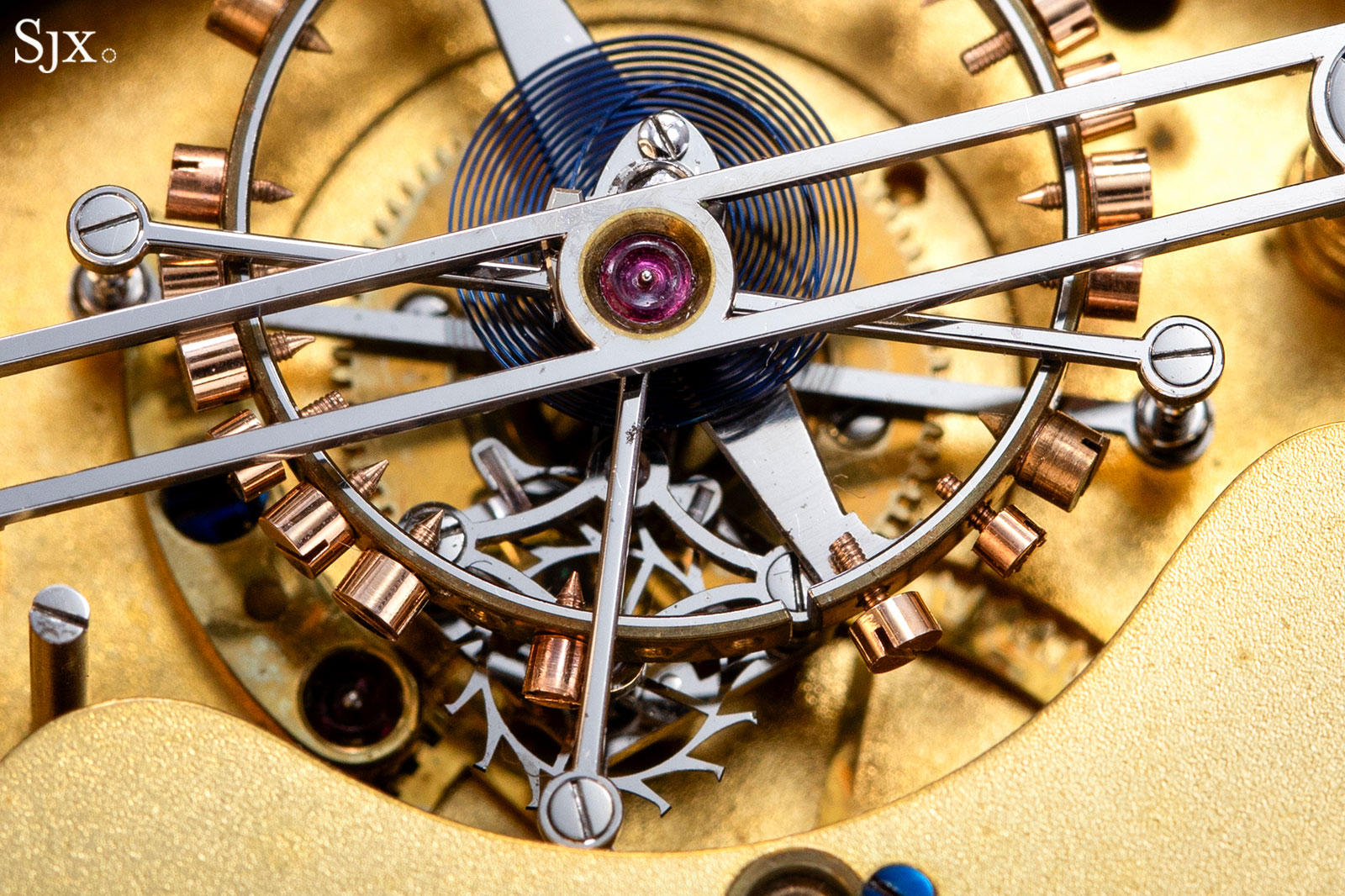
The tourbillon bridge is open worked and surprisingly slender, matched by a similarly simple yet refined tourbillon cage
Like several of the watches above, this was last sold publicly at Antiquorum in 1990 for substantially more. The Northern Goldsmiths tourbillon has an estimate of US$40,000-80,000.
Preview and auction
The sale and preview exhibition will take place at Phillips in New York.
432 Park Avenue
New York, NY 10022
United States
Preview
June 5-7, 10:00 am-7:00 pm
Auction
June 8, 10:00 am (lots 1-75)
June 9, 10:00 am (lots 76-151)
(All times are local to New York, Eastern Daylight Time or GMT-8.)
The catalogue and online bidding are available on Phillips.com.
This was brought to you in collaboration with Phillips.
Correction June 2, 2024: The Frodsham pocket watch is a grande sonnerie, instead of a grande and petite sonnerie was described in the first version of the article.
Back to top.
